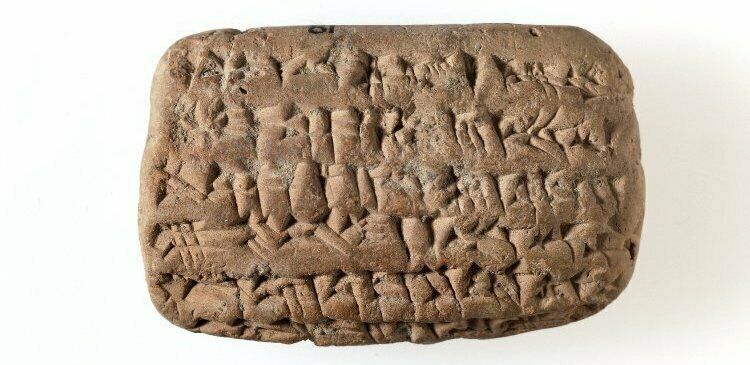The small Nebo-sarsechim tablet was discovered in an excavation in 1920 at the ancient Babylonian city of Sippar just 35 kilometers (about 22 miles) southwest of the capital of Iraq, Baghdad. This tablet was one among many thousands recovered from the site in the late 19th century.
Since 1991, Michael Jursa, associate professor at the University of Vienna, has been sifting through the approximately 130,000 inscribed tablets now located in the British Museum. During a routine day at the museum, on July 5, 2007, Jursa discovered the biblical name “Nabu-sharrussu-ukin rab sha-rēshi.”
Who is this Babylonian character? Why was Jursa’s discovery so significant? And what does it prove?
The tiny 3.5 cm-by-5.5 cm tablet, being so well preserved, took Jursa only minutes to decipher. The mundane receipt reads in full:
[Regarding] 1.5 minas [0.75 kg] of gold, the property of Nabu-sharrussu-ukin, the chief eunuch, which he sent via Arad-Banitu the eunuch to [the temple] Esangila: Arad-Banitu has delivered [it] to Esangila. In the presence of Bel-usat, son of Alpaya, the royal bodyguard, [and of ] Nadin, son of Marduk-zer-ibni, Month xi, day 18, year 10 [of] Nebuchadnezzar, king of Babylon.
Dr. Irving Finkel, the curator in charge of cuneiform inscriptions on tablets of clay from ancient Mesopotamia at the British Museum, said all Babylonian names have a meaning. The name “Nabu-sharrussu-ukin” means “Nabu has established his rule,” Nabu being a Babylonian god. His title, “rab sha-rēshi,” means “chief eunuch.”
Whether the term eunuch during this time period with the Babylonians and Persians actually meant they had been castrated is debated, but due to the situation, it is likely this man was not. He was a high-ranking military commander, a good reason to keep the man’s testosterone intact, and he later became king of Babylon (560–556 b.c.e.) under the name Nergalshareser—son-in-law of Nebuchadnezzar ii, and nobody would want to live under a castrated king.
This Babylonian chief eunuch was a top commander in the army, maintained a high position in the Babylonian court, and only one man received this title at a given time.
This Babylonian general is also mentioned in the Holy Scriptures. Jeremiah 39:3 reads, “that all the princes of the king of Babylon came in, and sat in the middle gate, even Nergal-sarezer, Samgar-nebo, Sarsechim Rab-saris, Nergal-sarezer Rab-mag, with all the residue of the princes of the king of Babylon.”
This is a poor translation. It should read “Samgar, Nebo-sarsechim the Rabsaris,” Rabsaris being the title “chief eunuch” that this general held. The Hebrew spelling is slightly different from the cuneiform, but this is to be expected as the vowels were filled in much later and after the accurate sounding of the name had been lost.
These are important details because Nebo-sarsechim was present during the second Babylonian siege of Jerusalem in 587–586 b.c.e. (verses 1-2), and entered through the gate into the city, as a military general would do, at the fall of Jerusalem.
Jursa commented on the discovery: “It is very exciting and very surprising. Finding something like this tablet, where we see a person named in the Bible making an everyday payment to the temple in Babylon and quoting the exact date is quite extraordinary.”
Curator of the tablet, Dr. Irving Finkel, stated:
This is a fantastic discovery, a world-class find. If Nebo-Sarsekim existed, which other lesser figures in the Hebrew Bible existed? A throwaway detail in the Hebrew Bible turns out to be accurate and true. I think that it means that the whole of the narrative takes on a new kind of power.
Small discoveries like this continually prove the biblical account to be accurate. So often small “throwaway” details are proved through archaeology and therefore add more authority to the Bible. If the Bible truly is the inspired Word of God, then these seemingly meaningless details must have been inserted for a specific purpose: the purpose of adding credibility to the Bible. Just as Dr. Finkel stated, when a small “throwaway detail” is discovered that parallels the biblical account, “the whole of the narrative takes on a new kind of power.”

